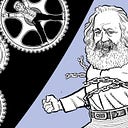Member-only story
What Is Unseen Is Eternal: Rilke’s Duino Elegies
So we fix our eyes not on what is seen, but on what is unseen, since what is seen is temporary, but what is unseen is eternal.- 2 Corinthians 4:18
I’m currently rereading Rilke’s Duino Elegies for the first time in at least 10 years. It is an overwhelming experience. Rilke is one of the few poets that touch the invisible realms of life. I love lots of modern poetry, but so much of it is based either on images or personal experience. Very few modern poets reach for the holy, the realms beyond mankind. Paul Celan certainly did. But that type of poetry, the one that reaches into archetypical souls is very hard to write, and maybe even harder to write about. (My recent reflections on Carl Jung’s “The Red Book” were an attempt).
Along with The Sonnets To Orpheus, Rilke’s Duino Elegies are his masterpieces. They are an expression of everything his earlier poetry hinted at but were never fully expressed. The key to understanding the elegies lies in the image of angels. Angels are all over the elegies. For example, the second elegy famously begins, “every angel is terrifying.” (I’m currently reading A. Poulin’s translation if you’re interested). I have always assumed that Rilke meant angels of a Christian heaven, which gave the poems a different flavor. But a note in my translation has changed my view. Rilke in a letter to a Polish translator…
